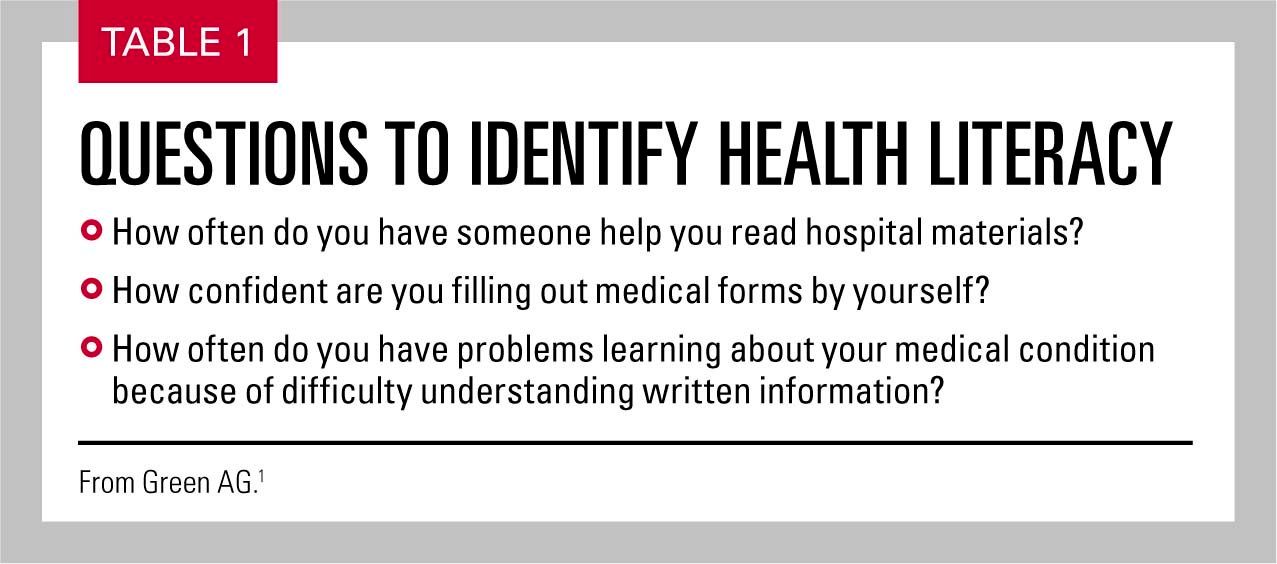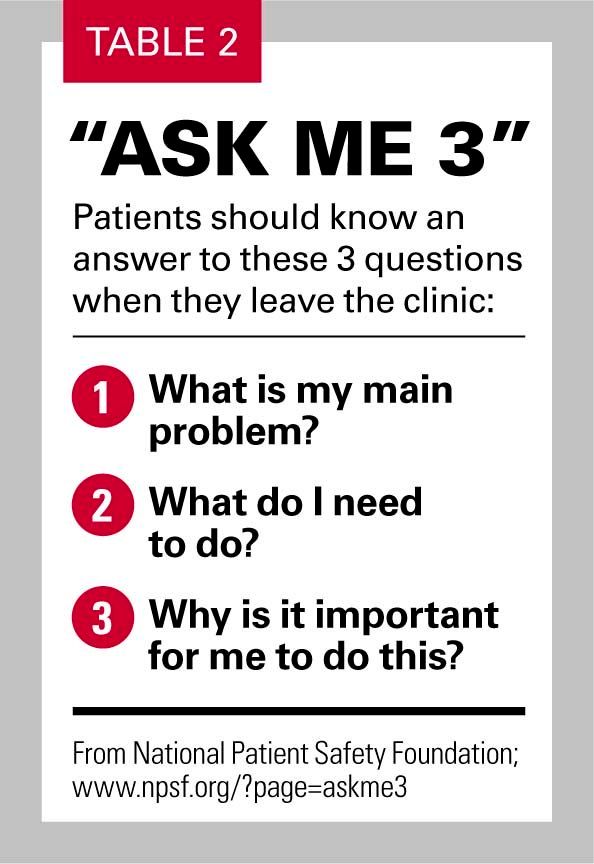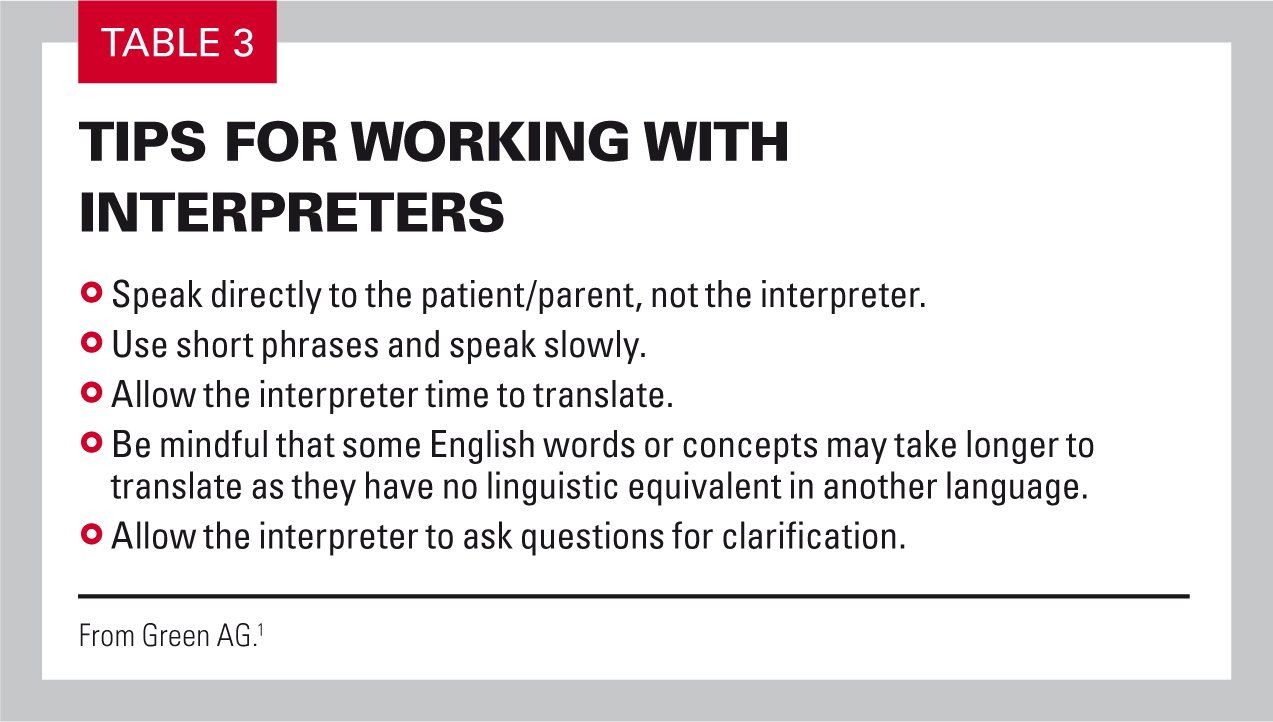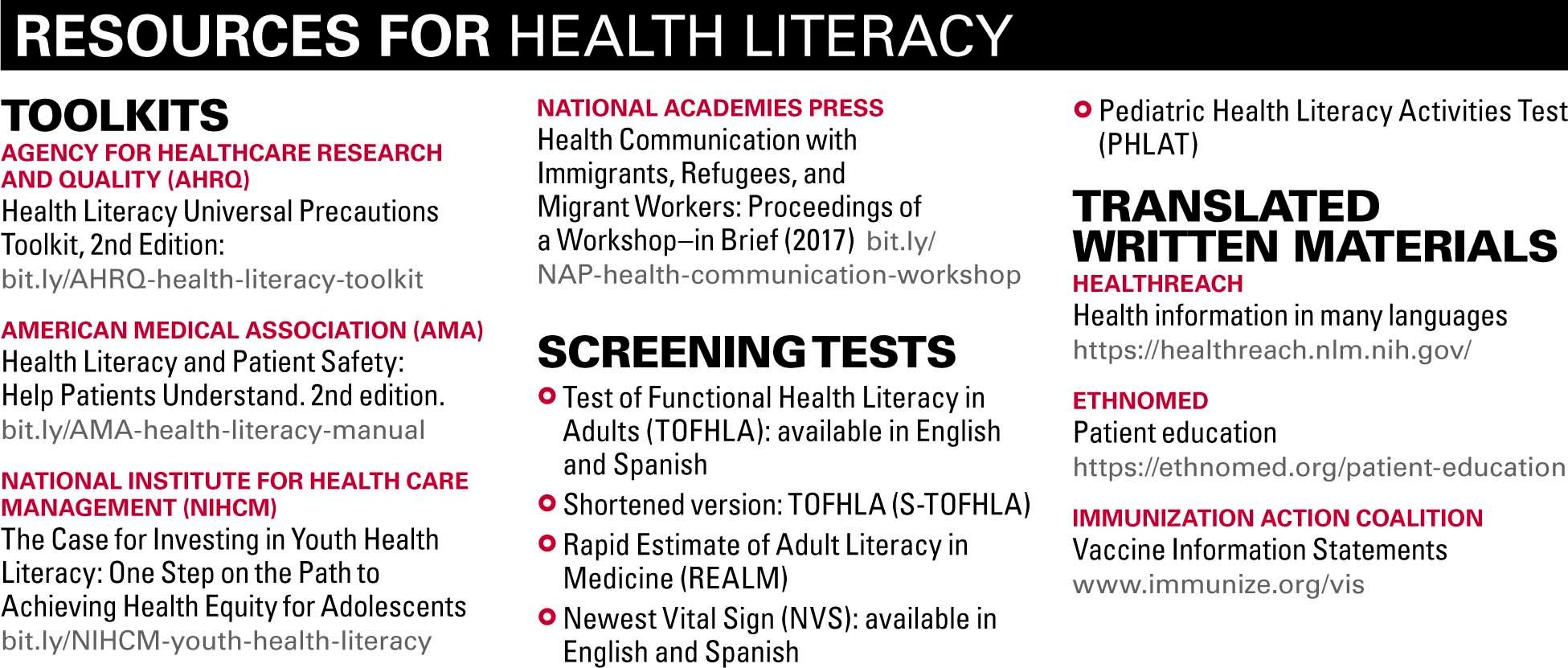Health literacy: A challenge in diverse populations
Health illiteracy is widespread across all populations, but it has the extra burden of language and cultural barriers in diverse and underserved populations. Here’s how pediatricians can help.
Of the many socioeconomic factors that predict health outcomes, health literacy may not be as well recognized as other factors such as race/ethnicity, education level, employment, and income. Yet data suggest that health literacy may be a stronger predictor than all these factors. Such data highlight the influence of poor health literacy on health outcomes, including increased mortality, lower patient satisfaction with care, lower quality of care, worse patient safety, higher healthcare costs, and overuse of the emergency department (ED).

Dr Green“Health literacy skills are a social determinant of health and strong skills mitigate health problems and risks,” says Andrea Green, MD, FAAP, associate professor of Pediatrics and director of the Pediatric New American Clinic, University of Vermont, Burlington.
Defining health literacy as “the ability of people to get health information, understand it, and use it to make better decisions concerning their health,” Green emphasizes the need for pediatricians to recognize, identify, and improve health literacy in their patients and caregivers during a presentation she gave at the recent American Academy of Pediatrics (AAP) National Conference. As reflected in the title of her presentation, “Strategies to improve health literacy for diverse and underserved populations,” she spoke on the needs and challenges to improving health literacy in diverse and underserved populations while emphasizing that the scope of the problem extends to all populations.1 It is estimated that nearly one-half, or 90 million, adult Americans have difficulty understanding and acting on health information, she says.
Recommended: How to perform a better physical exam
As such, clinicians need to be aware that health illiteracy is a common problem that reaches into all socioeconomic and educational levels of society. However, its reach into diverse and underserved communities, such as immigrant and ethnic communities, can be particularly challenging given the extra burden of cultural and language barriers.
This article focuses on ways clinicians can identify and improve health literacy in their patients, with a particular emphasis on strategies to ensure patients of diverse and underserved populations are receiving sufficient help.
Identifying health illiteracy
Acknowledging that screening patients and/or their caregivers for health literacy may be uncomfortable for providers as well as patients, Green encourages clinicians to practice what she calls universal health literacy precautions. “Just as we wash our hands before and after every patient visit to protect all patients from communicable diseases, healthcare professionals should seek to promote better understanding for all patients, not just those we think need extra assistance,” she says.
For pediatricians, this means identifying patients and, importantly, their caregivers who have difficulty understanding the medical information and instructions imparted to them in the clinic. Improving health literacy in caregivers is particularly important. Data show that lower health literacy in caregivers is associated with increased rates of hospitalization for asthma; use of inappropriately dosed over-the-counter medications; less family-centered care; and increased incidence of child aggression and antisocial behavior.
To this end, Green describes a number of “red flags” that may indicate a patient and/or caregiver has poor health literacy: frequently missed appointments; incomplete registration forms; noncompliance with medications; inability to name medications or explain their purpose or dosing; identifying pills by looking at them versus reading the label; inability to give coherent history; asking fewer questions; and not following through on tests or referrals.
To assess health literacy in patients and/or caregivers, Green provides a list of standardized screening tests that can be employed.

For providers who prefer a simpler screening approach, she cites evidence showing the effectiveness of asking 3 simple questions to identify health literacy (Table 1).
NEXT: Strategies to improve health literacy
Strategies to improve health literacy
In talking about strategies to improve health literacy, Green focuses primarily on interventions that clinicians can employ in the clinic to improve patient and caregiver health literacy. However, she emphasizes the importance of strategies that also need to be employed at the healthcare system level and at the community level to fully address the challenges of health illiteracy.
“Regardless of where interventions take place, however, interventions need to address language barriers, cultural barriers, and low health literacy simultaneously,” she says.
Critical to bridging these barriers is ensuring that clinicians communicate medical information in a clear and straightforward way. Green highlights 3 basic ways to make communication clearer:
1) Using plain language that employs concrete familiar words and short sentences to describe a medical issue instead of using standard medical terminology;
2) Using analogies and images to communicate complex topics; and
3) Asking open-ended questions that can help the clinician determine the patient’s level of understanding. (For more information on plain language materials and resources from the Centers for Disease Control and Prevention [CDC], go to bit.ly/CDC-plain-language).

Along with paying attention to the language used to talk to patients, Green also highlights several key ways to improve the effectiveness of communication in healthcare settings. One way is to use the “teach-back” method. In this method, clinicians ask patients to restate information or instructions given to ensure that they understand and remember it. This method also allows clinicians to assess what a patient’s perception is about information provided to them. “The healthcare provider should ask patients to repeat in their own words what they need to know or do, in a nonshaming way,” says Green. “This may be tricky, and a small dose of humility goes a long way.” For more information on this method, check out the Always Use Teach-back! training toolkit at www.teachbacktraining.org.
One way of assessing whether a patient has understood and remembered the information discussed in the clinic is to employ a program designed by the National Patient Safety Foundation called “Ask Me 3” that encourages patients to know 3 things before they leave the clinical visit (Table 2). For more information, go to www.npsf.org/?page=askme3.
A second strategy that Green emphasizes as important, particularly because it pertains to immigrants as well as people born in America with limited proficiency in the English language, is the use of interpreters.
Although federal law mandates that interpreter services be rendered for any patient with limited English proficiency, Green says that many healthcare providers remain unaware that they need to provide an interpreter for these patients and that reimbursement for these services often is lacking. Data show, however, that use of trained interpreters is associated with improved outcomes, including patient satisfaction, appropriate use of resources, and reduction in liability.

Green encourages clinicians to use trained medical interpreters, either in the clinic or remotely (via teleconference), and emphasizes that interpreters with more extensive training (>100 hours) make far fewer errors of clinical significance than those with less training or those without specific medical training.
Green also provides a number of tips for working with interpreters in the clinic (Table 3), as well as resource sites for translated written material to hand out to patients.

Summary
Health literacy is critical for good health. Despite this, many people do not understand basic medical information and instructions. Such health illiteracy is widespread across all populations, but it has the extra burden of language and cultural barriers in diverse and underserved populations.
Next: Implementing mental health services in primary care
Pediatricians can help improve the health literacy in their patients/caregivers by intervening with some simple but effective measures that focus on delivering medical information in a clear and simple way and ensuring the information is understood by the patient/caregiver. Including an interpreter to help bridge language and cultural barriers in patients who are not proficient in English is essential to address health illiteracy in diverse and underserved populations.
REFERENCE
1. Green AG. Strategies to improve health literacy for diverse and underserved populations (F2036). Presented at: American Academy of Pediatrics National Conference and Exhibition; September 17, 2017; Chicago, IL.
Having "the talk" with teen patients
June 17th 2022A visit with a pediatric clinician is an ideal time to ensure that a teenager knows the correct information, has the opportunity to make certain contraceptive choices, and instill the knowledge that the pediatric office is a safe place to come for help.
Meet the Board: Vivian P. Hernandez-Trujillo, MD, FAAP, FAAAAI, FACAAI
May 20th 2022Contemporary Pediatrics sat down with one of our newest editorial advisory board members: Vivian P. Hernandez-Trujillo, MD, FAAP, FAAAAI, FACAAI to discuss what led to her career in medicine and what she thinks the future holds for pediatrics.